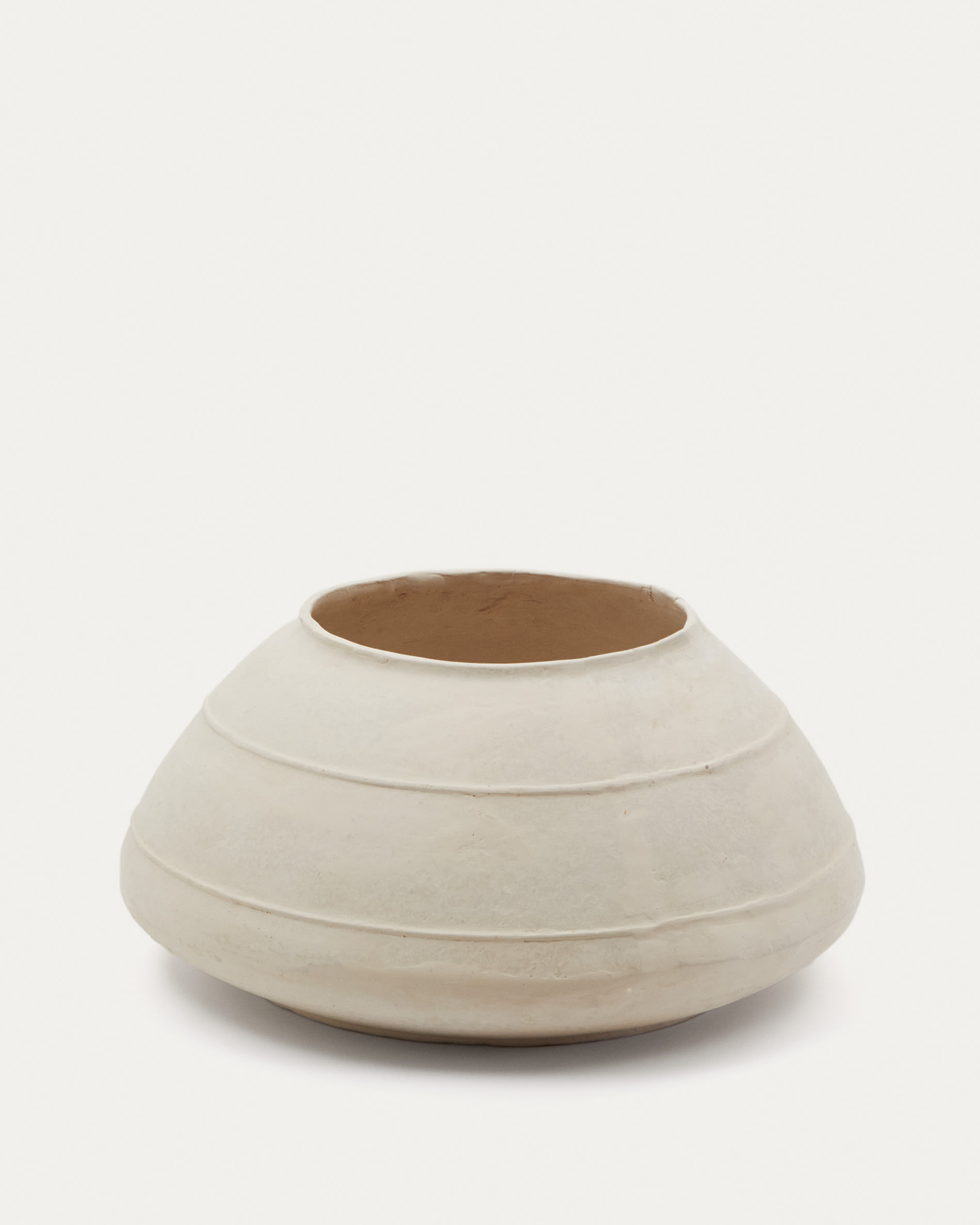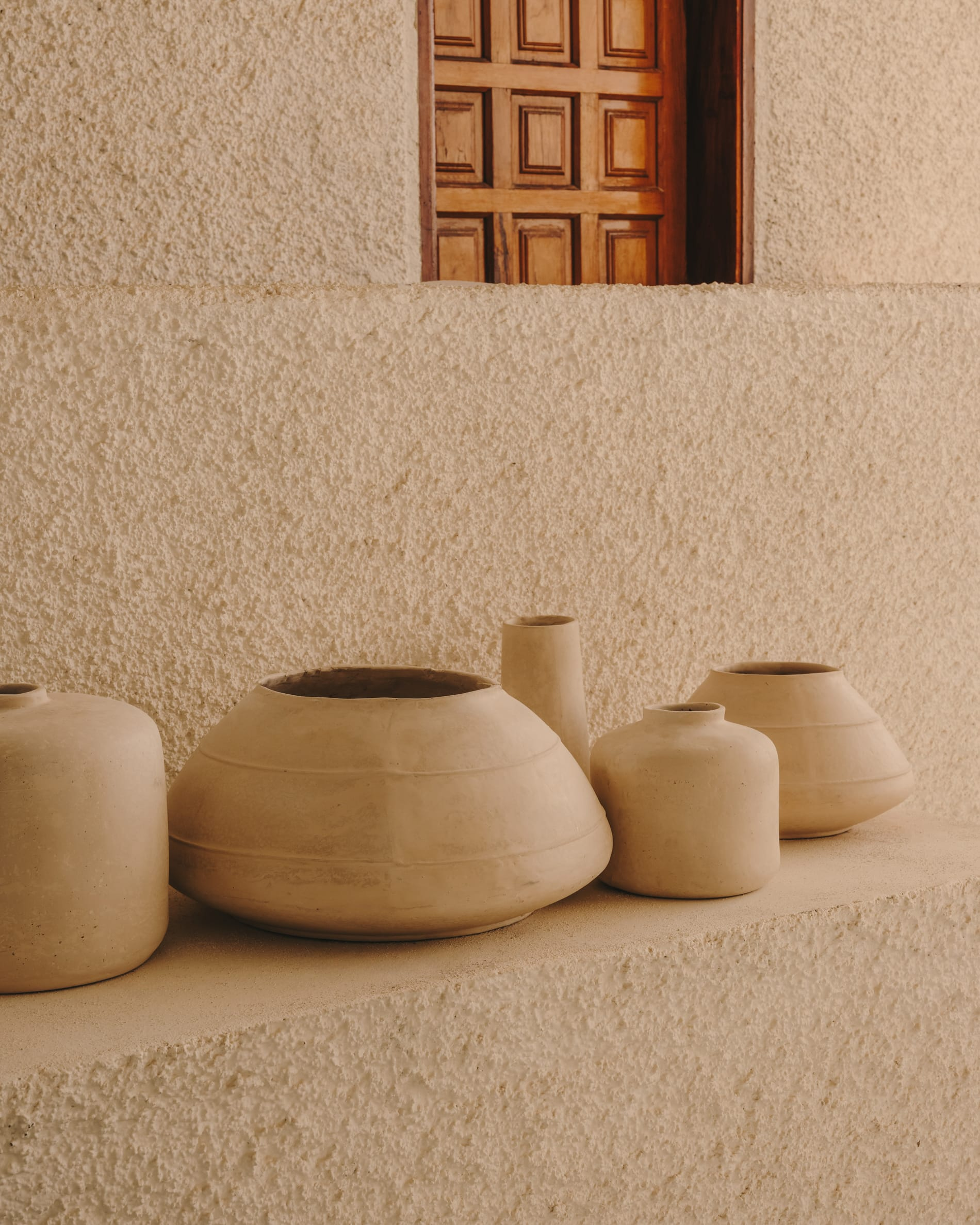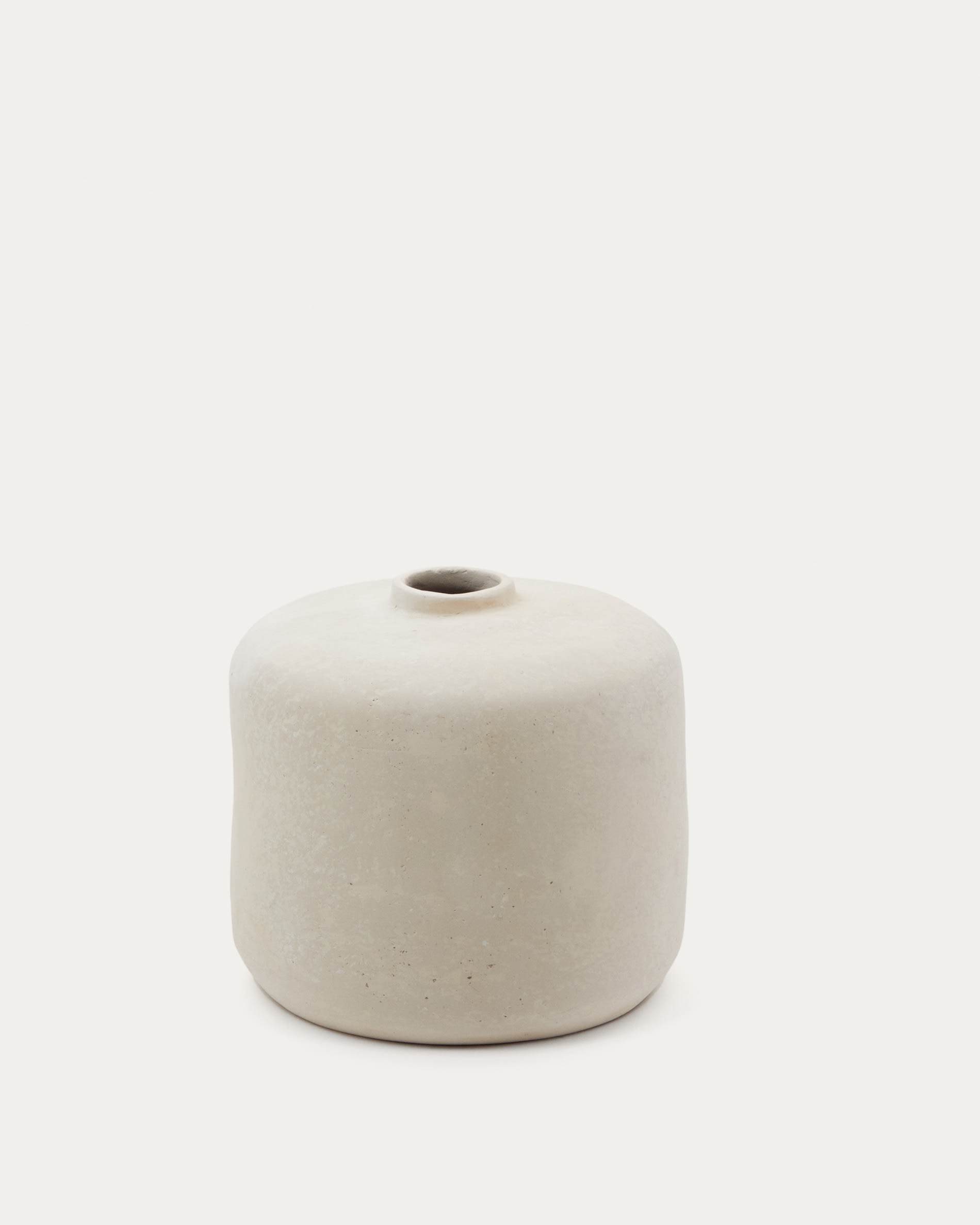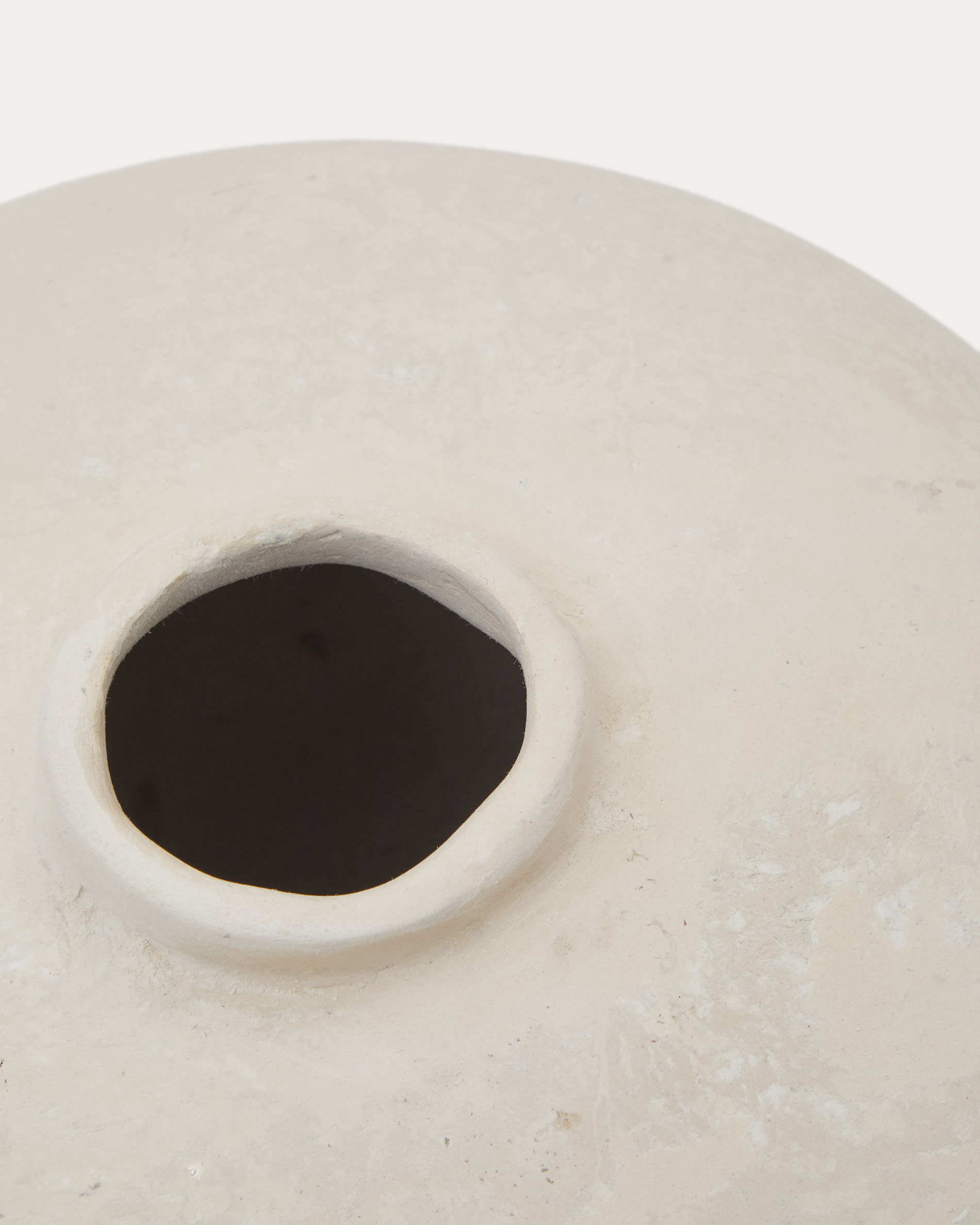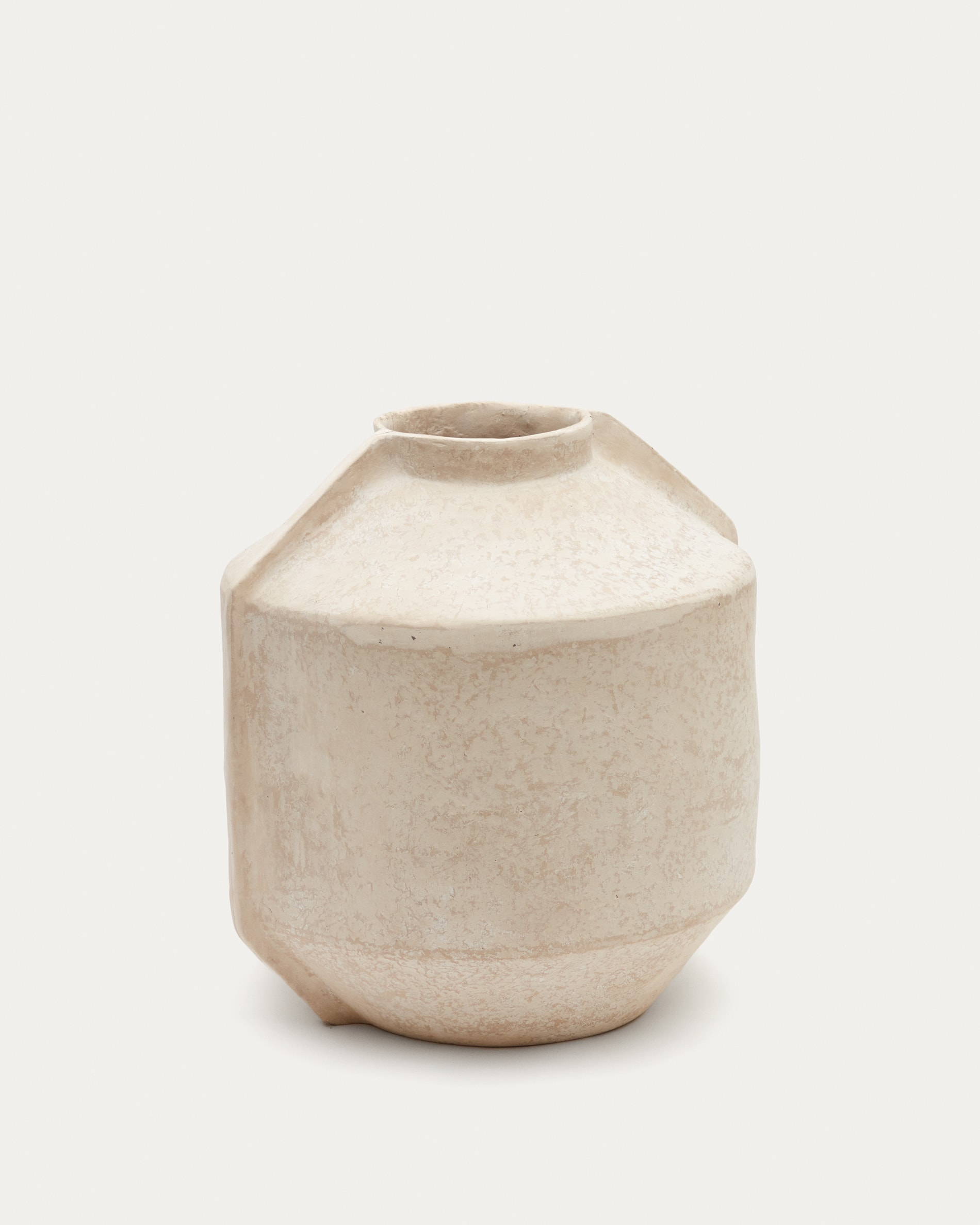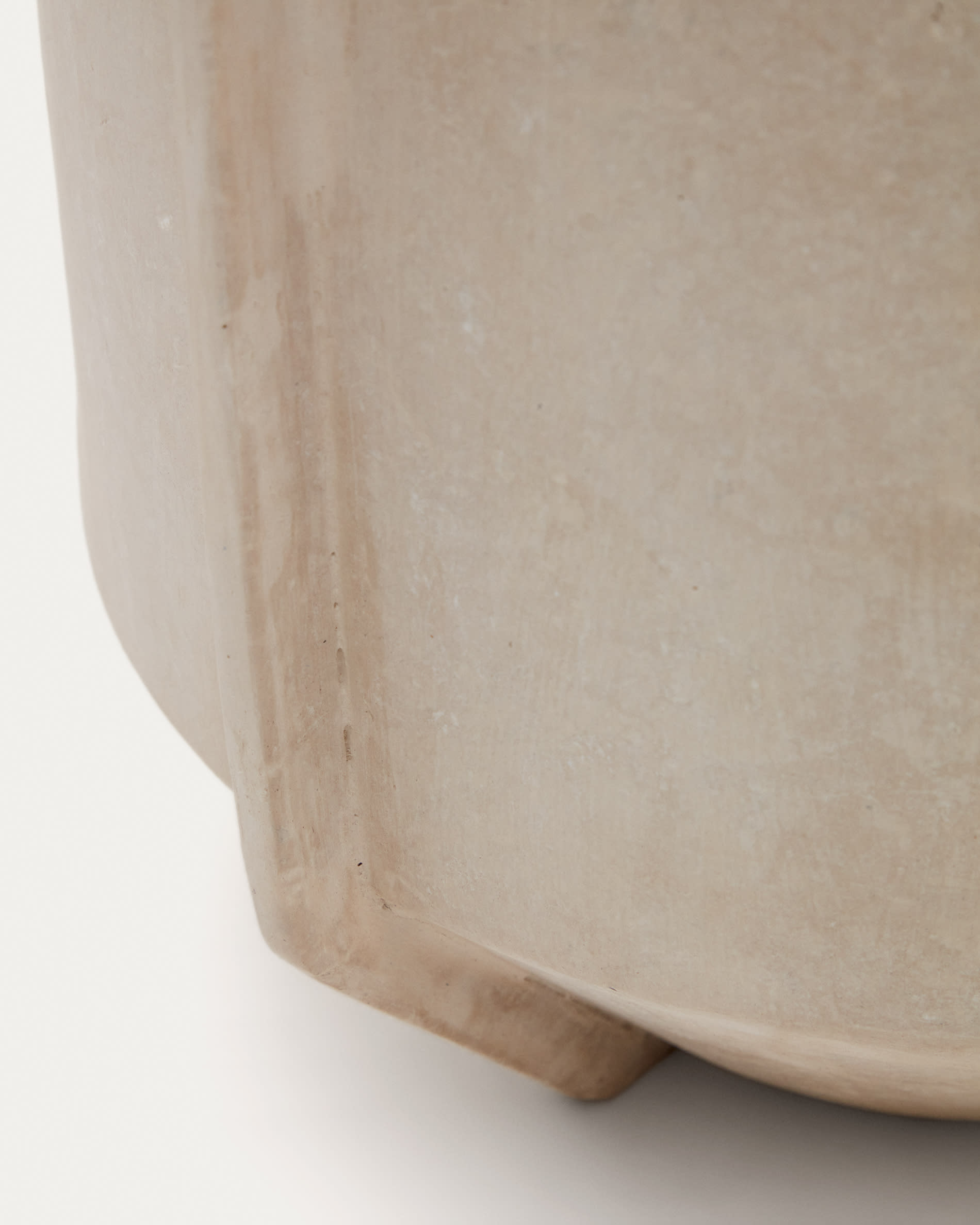- Home
- Japandi Vases
Japandi Vases
Japandi Vases – Scandinavian & Japanese Fusion Style
Japandi vases embody a harmonious blend of Japanese wabi-sabi and Scandinavian hygge. Their designs prioritize simplicity, using organic forms to balance serene aesthetics with practicality.
Minimalist Silhouettes
Curved, asymmetrical shapes echo Japanese ikebana traditions. Scandinavian influences add clean lines and geometric precision, creating timeless forms that adapt to diverse interiors.
Natural Material Pairings
Ceramic bases with wooden accents or glass elements fuse earthy textures with Nordic practicality. This combination satisfies the Japanese reverence for imperfection while ensuring durability.
Aesthetic Benefits For Modern Interiors
These vases transform spaces by merging two design philosophies centered on tranquility and purposeful beauty.
Calm Through Neutral Palettes
Available in white, black, and earth tones, they create visual serenity. Muted hues mirror Scandinavian hygge while aligning with Japanese monochromatic traditions.
Organic Connection
Wood inlays and textured ceramics bring nature indoors, satisfying both cultures' emphasis on natural elements without overwhelming modern spaces.
Practical Considerations: Materials, Durability, And Size Options
Functionality drives their construction, ensuring beauty withstands daily use across varied environments.
Durability By Design
- Glazed ceramics resist staining
- Tempered glass withstands temperature changes
- Sealed wood accents prevent warping
Versatile Sizing
Measurements span 8-29" height, 3-13" width, and 3-8" depth. This range accommodates:
- Small bud vases (8-12") for entryways
- Medium (13-20") for dining tables
- Statement pieces (21-29") for living rooms
Styling Tips For Different Decor Styles
Adapt these vases to specific interior aesthetics while maintaining their inherent balance of simplicity and utility.
Scandinavian Hygge
Pair ceramic vases with dried pampas grass near wool throws. Use black vases with geometric patterns to accentuate Nordic hygge.
Japanese Zen
Display asymmetrical vases with single bamboo stalks or bonsai. Choose unglazed ceramic for authentic wabi-sabi imperfection.
Where To Find Authentic Designs
Over 78% of online retailers now stock Japandi vases. Prioritize sellers offering:
- 1-week delivery guarantees
- Price ranges from £69-£120
- Customization options for corporate spaces
What is a Japandi vase?
Japandi style merges Japanese minimalism and Scandinavian functionality, creating vases that embody a lifestyle centered on calm and harmony. This design philosophy transcends decoration, uniting two cultures through shared values of simplicity and natural beauty. The fusion feels natural: both traditions prioritize intentionality over excess, resulting in forms that feel both serene and purposeful. Neutral tones like white, black, and earthy hues anchor the aesthetic, bridging stark Scandi minimalism with Japan’s organic warmth.
Inspired by Wabi-Sabi, these vases celebrate imperfect beauty through irregular textures and asymmetrical shapes. Organic imperfections—like cracked glazes or uneven wood grains—transform flaws into art, reflecting nature’s transient beauty. Each piece embodies transience without demanding attention. Historical ties dating to the 1860s highlight this seamless blend, where Japanese reverence for imperfection meets Nordic appreciation for understated elegance.
Scandinavian functionality introduces clean lines and practicality. Materials like ceramic, glass, and wood accents balance durability with warmth, while muted tones soften stark minimalism. Sizes range from 8” to 29”, adapting to minimalist lofts or cozy interiors. These vases prove utility enhances artistic depth—crafting quiet sophistication, where every curve and material choice serves both form and function.
How to choose your japandi vase?
Japandi vases merge Japanese minimalism and Scandinavian functionality for modern interiors. Balance purpose, aesthetics, and space. Ask: Will it hold flowers, dried botanicals, or act as art? Where will it sit? Ensure its design complements your room’s textures and colors without clashing.
- What is its primary purpose? (A statement piece, a holder for fresh flowers, or for dried botanicals?)
- Where will it be placed? (A large floor vase for a corner, or a small bud vase for a bookshelf?)
- What existing colors and textures are in the room? (Choose a vase that complements, not competes.)
Consider the material and texture
Japandi vases use natural materials with imperfect textures reflecting Wabi-Sabi. Prioritize durability and tactile appeal:
- Ceramic & Stoneware: Matte or rough textures for earthy imperfection. Durable for daily use.
- Glass: Smoked or soft tints for modern elegance. Fragile, best for low-traffic zones.
- Wood: Organic warmth. Natural grain patterns add uniqueness. Requires periodic care.
- Cement/Concrete: Raw texture with minimalist edge. Heavyweight for stability.
Opt for subtle textures that age gracefully. Match materials to usage: ceramic/stoneware for function, glass for display.
Select the right shape and size
Organic shapes and asymmetrical design mimic natural forms. Sizes range from small bud vases (8–12 inches tall) to large floor vases (up to 29 inches). Narrow pieces (3–6 inches wide) suit shelves; broader ones (10–13 inches) fill corners. Measure space to avoid overcrowding—use sculptural forms as intentional focal points.
Choose a color palette that complements your space
Stick to a neutral and earthy palette like off-white, beige, or terracotta for serenity. Deeper grey or black adds contrast in modern rooms. Avoid bold hues; muted tones create a calming atmosphere while blending with wood, linen, or stone. Pair terracotta with gray walls or black ceramics with oak shelves for subtle contrast. This neutral synergy adapts across decor styles.
Styling Your Japandi Vase for Maximum Impact
The essence of styling ideas for Japandi vases lies in their dual role as functional decor and sculptural object. These pieces thrive in simplicity, whether displayed with a single stem or left empty to highlight their architectural form. Their minimalist silhouette ensures they complement both floral arrangements and modern interiors seamlessly.
For a curated look, consider these minimalist foliage options:
- Dried branches like pampas grass or cotton stems for a low-maintenance, textural statement.
- Single stems such as a monstera leaf or a solitary orchid to emphasize clean lines and negative space.
- Ikebana-inspired designs using asymmetrical, sparse arrangements of bamboo or willow branches.
- Embrace emptiness: Let the vase stand alone, celebrating its matte ceramic finish or organic wood accents as a standalone art piece.
Strategic placement amplifies impact. Position tall vases on console tables or floor corners to anchor a room, while smaller sizes shine on nightstands or desks. Pair with neutral tones and natural textures to enhance the sculptural object quality. A black ceramic vase with a rough-hewn finish, for instance, becomes a focal point when paired with a single dried branches silhouette, blending Japandi’s ethos of calm and purpose.
Caring for your japandi vase: maintenance tips by material
Preserving the harmony of natural materials and functional design in japandi vases requires thoughtful care. Proper maintenance ensures longevity while honoring the minimalist ethos of simplicity and respect for natural materials. Each material—ceramic, glass, or wood—demands specific attention to maintain its waterproof integrity and aesthetic appeal. Below is a concise guide to cleaning and upkeep.
| Material | Cleaning Instructions | Key Considerations |
|---|---|---|
| Unglazed Ceramic/Stoneware | Gently wipe with a damp cloth. Avoid harsh soaps. | Often porous; use a glass liner for fresh flowers. Embrace the natural patina that develops over time (Wabi-Sabi). |
| Glazed Ceramic | Wash with mild soap and water. Usually dishwasher safe, but check manufacturer advice. | Waterproof and highly durable. Ideal for versatile use in modern interiors. |
| Glass | Hand wash with warm, soapy water. Use a bottle brush for narrow necks. | Can show hard water spots; dry with a soft cloth for a streak-free finish. |
| Wood/Wood Accents | Dust regularly with a dry cloth. Never submerge in water. | For decorative purposes or dried botanicals only. Not waterproof. |
By aligning care tips with the principles of japandi design—minimalism and functionality—your vases will retain their timeless elegance. Prioritize gentle techniques to honor the organic textures and sustainable ethos of these pieces.
FAQ
What defines the unique style of a Japandi vase?
Japandi vases blend Japanese minimalism with Scandinavian functionality, creating objects that embody calm and harmony. Rooted in the Wabi-Sabi philosophy, these vases celebrate imperfect beauty through organic shapes, textured surfaces, and natural materials. Unlike purely decorative pieces, Japandi vases prioritize purposeful design—balancing serene aesthetics with practicality to enhance everyday living spaces.
How do I choose the right size Japandi vase for my space?
Consider both the room and the vase’s purpose. For statement pieces, opt for large floor vases (22–29 inches tall), while small bud vases (8–16 inches) suit shelves or side tables. Use dimensions from 3–13 inches wide to match existing decor. A vase’s scale should complement its surroundings—a narrow-necked design adds elegance to open spaces, while compact shapes work well in intimate settings.
What materials are best for authentic Japandi vases?
Authentic Japandi vases use natural materials like ceramic, stoneware (with matte or rough textures), and glass in muted tones. Wood accents add warmth, while cement introduces an industrial edge. These materials align with the style’s focus on subtle textures and durability, ensuring each vase ages gracefully while maintaining its functional beauty.
Which color palette works best for Japandi vases?
Stick to a neutral and earthy palette—think off-white, beige, grey, terracotta, and olive green. These hues foster a calming atmosphere and harmonize with the style’s emphasis on simplicity. Avoid bold colors; instead, let textures and understated tones create visual balance, reflecting the Japandi ethos of serenity.
How should I care for my Japandi vase to ensure longevity?
Care depends on material: unglazed ceramic needs gentle wiping (avoid soaking), while glazed ceramic can often be washed with mild soap. Glass benefits from handwashing to prevent water spots, and wood accents require dry dusting only. Embrace natural patina development, especially in porous materials, as it enhances the Wabi-Sabi charm. Always use liners for fresh flowers in non-waterproof options to protect their integrity.
